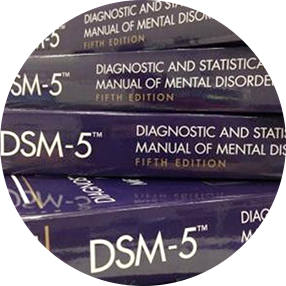Borderline Personality Disorder
What is borderline personality disorder?
Borderline personality disorder (BPD) is a mental illness . It may also be called emotionally unstable personality disorder. People with BPD have unstable moods and can act recklessly. They also have a hard time managing their emotions consistently. If you have BPD, you may have problems with daily tasks, obligations, and life events. You may have trouble keeping jobs and relationships. And you may use food, alcohol, or other substances to cope.
It’s important to get treatment because you are at higher risk for suicide. You are also at higher risk for depression, anxiety, substance abuse, and self-harm. Experts are still learning about the condition. Certain kinds of treatment can help and are often quite successful.
What causes borderline personality disorder?
Mental health experts don’t know exactly what causes BPD. Some studies have shown it may be passed down in families. Your social and cultural surroundings may also play a part. For example, you may be at higher risk for BPD if you are part of a community with unstable relationships. People are at a higher risk for getting BPD if they have suffered from childhood trauma, abuse, or neglect. Living with parents or guardians who have a history of substance abuse or criminal activity may increase the risk as well.
What are the symptoms of borderline personality disorder?
The symptoms of BPD often start during the teen years. Symptoms can be a bit different for each person. But people with BPD will have at least 5 of these symptoms over time:
- A pattern of severe mood changes over hours or days
- Extreme anger and problems controlling anger
- Strong, up-and-down relationships with family and friends that can go quickly from very close to anger and hatred
- Extreme fear of and reactions to abandonment, and extreme behaviors to avoid abandonment
- A rapidly changing sense of self that can cause sudden changes in goals, values, or behaviors
- Feeling disconnected from themselves, their body, or reality, or having paranoid thoughts
- Ongoing feelings of emptiness
- Self-destructive behaviors such as substance abuse, binge eating, unsafe sex with multiple partners, unsafe driving, or reckless spending
- Suicide attempts or self-harming behavior such as cutting, hair pulling, or burning
The symptoms of BPD may look like other health conditions or problems. Always talk with your healthcare provider for a diagnosis.
How is borderline personality disorder diagnosed?
If you have BPD symptoms, you can be diagnosed by a mental health provider. This type of specialist can include a psychiatrist or a psychologist. Or you may be seen by a licensed clinical social worker (LCSW) or psychiatric nurse practitioner.
The mental health provider will ask about your health history and your symptoms. You may be asked about your family’s history of mental health conditions. You may also have a physical exam. This can rule out other illness. Make sure to tell the mental health provider about any health problems you have and any medicines you take.
How is borderline personality disorder treated?
Treatment will depend on your symptoms, age, and general health. It will also depend on how severe the condition is.
Many people with BPD respond well to treatment and get better. The most common treatment for BPD is psychotherapy. It can be done one-on-one or in a group setting. It may also be helpful if your family is part of the treatment. A trained psychotherapist may use one or more of these methods:
- Cognitive behavioral therapy (CBT). This gives you tools to help change your thoughts and actions.
- Dialectical behavior therapy. This helps you to be more aware of the current moment. It teaches you how to reduce extreme emotions and actions.
- Schema-focused therapy. This helps you change how you see yourself. It helps you turn negative views into more positive ones.
- Systems Training for Emotional Predictability and Problem Solving (STEPPS). This trains you to use tools to manage your reactions to certain situations. Family and friends are also trained.
Medicines can also help some people with BPD. Medicines are generally not the first line of treatment because their benefits in treating BPD are unclear. When prescribed, medicines are used to treat specific symptoms such as depression or mood swings.
Neuroleptic and atypical antipsychotic medicine can help with some symptoms. Antidepressant and anti-anxiety medicine can be used to treat symptoms of depression or anxiety that may happen at the same time as BPD.
Contact Dr. Fogelson’s office to schedule an appointment for a Borderline Personality Disorder evaluation.

